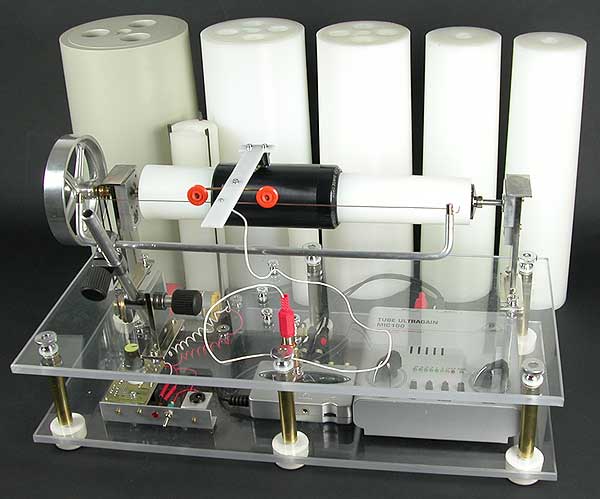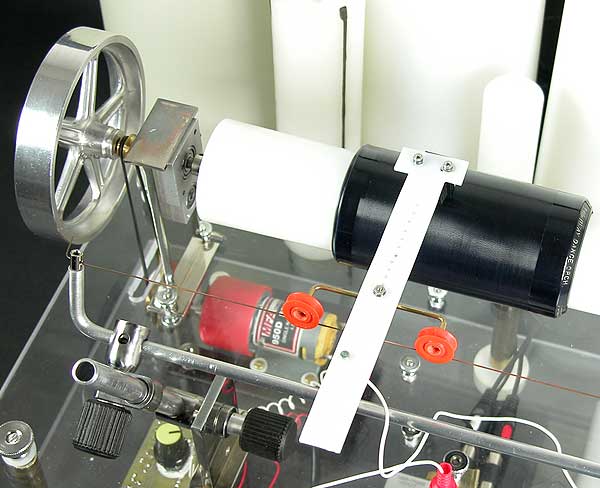|
The Pauliphone (*) was built to play and make transcriptions of all kinds of phonograph cylinders to digital format. It was built along the principle of direct drive developed by Rob Lomas, and it is similar to a player built by Norman Bruderhofer. The Pauliphone is not intended to rival the Archéophone - a must in this field - but to come up with a simple way to play cylinders by modern means, and without ruining them.
The player consists of three principal parts:
- The mechanics: a 12 V DC motor from MFA with reduction grears, a kind of motor that is used in scale model building, drives the horizontal mandrel whose shaft rests on two ball bearings. Elastic supports provide acoustic isolation. A voltage control and a digital, contact free speed meter are used to regulate the speed of the mandrel in the range of 50 - 300 rpm. A set of eight interchangeable polypropylene mandrels allows wax or celluloid cylinders of all sizes to be played.
- A readout unit, consisting mainly of a tone arm with a magnetic cartridge and a preamplifier. The Shure SC35C cartridge has been rewired to give a mono output for vertically modulated grooves. The cartidge has interchangable styli for different size grooves (two minute, four minute or four minute Amberol) with conical tips of 8, 3,7 and 3,5 mil radius, respectively. Stylus pressure is about five grams, and can be adjusted as needed. The arm moves freely on two grooved pulleys that roll along a metal wire parallel to the cylinder. It is driven only by the force exerted by the groove on the tip of the stylus, and is thus independent of the spacing of the grooves. The arm can be precisely positioned for playing cyliners on different size mandrels. The signal from the cartridge is fed to a Behringer Ultragain MIC 100 valve preamplifier through a cable flexible enough to not resist the sideways movement of the arm. The MIC 100 provides linear amplification and has volume controls for incoming and outgoing signals
- A USB audio interface, the U-Phono UF0202 from Behringer, without RIAA correction, connects the preamplifier to the computer. By way of a sound processing program such as Audacity, Magix Audio Cleanic or iZotope RX the sound can be transferred to digital form or listened to in real time. It also makes some sound restauration possible, such as noise removal and filtering of some frequencies.
If you are interested, I can recommend two sites that will give good help in the building of a cylinder player:
|





